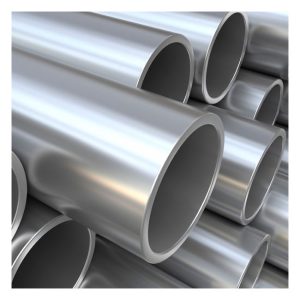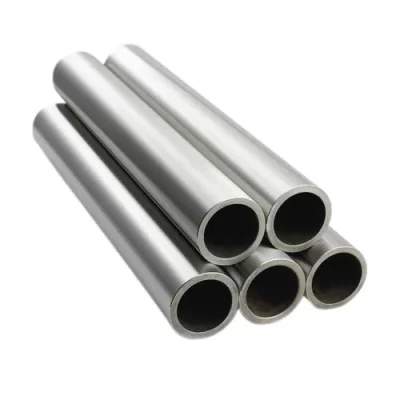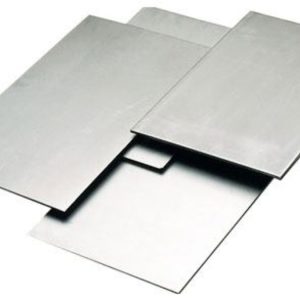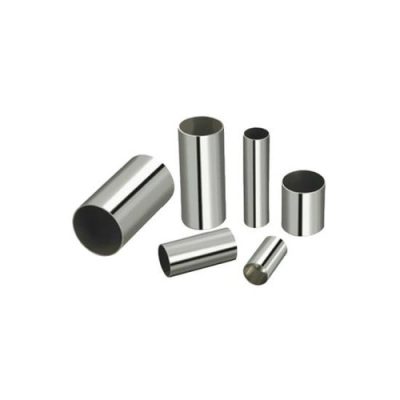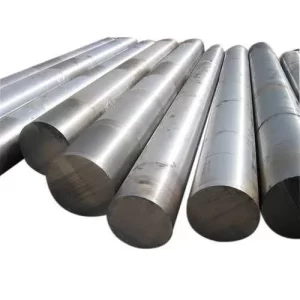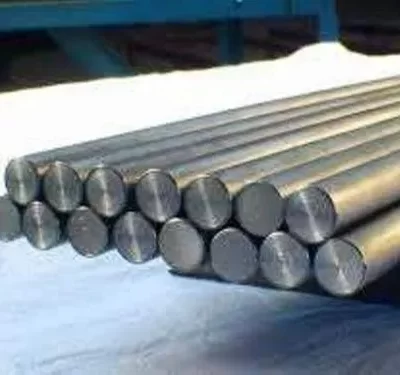Showing 1–9 of 13 results
-
Alloy 28
The Nickel 201 alloys is an alloy that contains commercially pure wrought Nickel and has good mechanical properties that extend over a wide range of temperatures. The Nickel alloy 201 has excellent resistance to many corrosives, hydroxides in particular.
Nickel 201 has similar properties to Nickel 200. However, due to its lower carbon content, Nickel 201 can better prevent embrittlement by inter-granular carbon at elevated temperatures.
Nickel 201 has native properties to provide strong resistance to corrosion in acids and alkalis. It is especially useful under reducing conditions. The alloy has outstanding resistance to caustic alkalis, which includes its molten state. The alloy shows good resistance in acid, alkaline, and neutral salt solutions.
However, when Nickel 201 is in oxidizing salt solutions severe corrosion will occur. The Nickel 201 alloy is resistant to all dry gases at room temperature. In dry chlorine and hydrogen chloride, Nickel 201 alloy may be used in temperatures up to 550 °C. Its resistance to mineral acids varies according to temperature, concentration, and solution aeration. Its corrosion resistance displays better in de-aerated acid.
-
Alloy 31 Gr
The Nickel 201 alloys is an alloy that contains commercially pure wrought Nickel and has good mechanical properties that extend over a wide range of temperatures. The Nickel alloy 201 has excellent resistance to many corrosives, hydroxides in particular.
Nickel 201 has similar properties to Nickel 200. However, due to its lower carbon content, Nickel 201 can better prevent embrittlement by inter-granular carbon at elevated temperatures.
Nickel 201 has native properties to provide strong resistance to corrosion in acids and alkalis. It is especially useful under reducing conditions. The alloy has outstanding resistance to caustic alkalis, which includes its molten state. The alloy shows good resistance in acid, alkaline, and neutral salt solutions.
However, when Nickel 201 is in oxidizing salt solutions severe corrosion will occur. The Nickel 201 alloy is resistant to all dry gases at room temperature. In dry chlorine and hydrogen chloride, Nickel 201 alloy may be used in temperatures up to 550 °C. Its resistance to mineral acids varies according to temperature, concentration, and solution aeration. Its corrosion resistance displays better in de-aerated acid.
-
Alloy 42
The Nickel 201 alloys is an alloy that contains commercially pure wrought Nickel and has good mechanical properties that extend over a wide range of temperatures. The Nickel alloy 201 has excellent resistance to many corrosives, hydroxides in particular.
Nickel 201 has similar properties to Nickel 200. However, due to its lower carbon content, Nickel 201 can better prevent embrittlement by inter-granular carbon at elevated temperatures.
Nickel 201 has native properties to provide strong resistance to corrosion in acids and alkalis. It is especially useful under reducing conditions. The alloy has outstanding resistance to caustic alkalis, which includes its molten state. The alloy shows good resistance in acid, alkaline, and neutral salt solutions.
However, when Nickel 201 is in oxidizing salt solutions severe corrosion will occur. The Nickel 201 alloy is resistant to all dry gases at room temperature. In dry chlorine and hydrogen chloride, Nickel 201 alloy may be used in temperatures up to 550 °C. Its resistance to mineral acids varies according to temperature, concentration, and solution aeration. Its corrosion resistance displays better in de-aerated acid.
-
Alloy 59
The Nickel 201 alloys is an alloy that contains commercially pure wrought Nickel and has good mechanical properties that extend over a wide range of temperatures. The Nickel alloy 201 has excellent resistance to many corrosives, hydroxides in particular.
Nickel 201 has similar properties to Nickel 200. However, due to its lower carbon content, Nickel 201 can better prevent embrittlement by inter-granular carbon at elevated temperatures.
Nickel 201 has native properties to provide strong resistance to corrosion in acids and alkalis. It is especially useful under reducing conditions. The alloy has outstanding resistance to caustic alkalis, which includes its molten state. The alloy shows good resistance in acid, alkaline, and neutral salt solutions.
However, when Nickel 201 is in oxidizing salt solutions severe corrosion will occur. The Nickel 201 alloy is resistant to all dry gases at room temperature. In dry chlorine and hydrogen chloride, Nickel 201 alloy may be used in temperatures up to 550 °C. Its resistance to mineral acids varies according to temperature, concentration, and solution aeration. Its corrosion resistance displays better in de-aerated acid.
-
Alloy 926
The Nickel 201 alloys is an alloy that contains commercially pure wrought Nickel and has good mechanical properties that extend over a wide range of temperatures. The Nickel alloy 201 has excellent resistance to many corrosives, hydroxides in particular.
Nickel 201 has similar properties to Nickel 200. However, due to its lower carbon content, Nickel 201 can better prevent embrittlement by inter-granular carbon at elevated temperatures.
Nickel 201 has native properties to provide strong resistance to corrosion in acids and alkalis. It is especially useful under reducing conditions. The alloy has outstanding resistance to caustic alkalis, which includes its molten state. The alloy shows good resistance in acid, alkaline, and neutral salt solutions.
However, when Nickel 201 is in oxidizing salt solutions severe corrosion will occur. The Nickel 201 alloy is resistant to all dry gases at room temperature. In dry chlorine and hydrogen chloride, Nickel 201 alloy may be used in temperatures up to 550 °C. Its resistance to mineral acids varies according to temperature, concentration, and solution aeration. Its corrosion resistance displays better in de-aerated acid.
-
Alloy Steel Q245R
The Nickel 201 alloys is an alloy that contains commercially pure wrought Nickel and has good mechanical properties that extend over a wide range of temperatures. The Nickel alloy 201 has excellent resistance to many corrosives, hydroxides in particular.
Nickel 201 has similar properties to Nickel 200. However, due to its lower carbon content, Nickel 201 can better prevent embrittlement by inter-granular carbon at elevated temperatures.
Nickel 201 has native properties to provide strong resistance to corrosion in acids and alkalis. It is especially useful under reducing conditions. The alloy has outstanding resistance to caustic alkalis, which includes its molten state. The alloy shows good resistance in acid, alkaline, and neutral salt solutions.
However, when Nickel 201 is in oxidizing salt solutions severe corrosion will occur. The Nickel 201 alloy is resistant to all dry gases at room temperature. In dry chlorine and hydrogen chloride, Nickel 201 alloy may be used in temperatures up to 550 °C. Its resistance to mineral acids varies according to temperature, concentration, and solution aeration. Its corrosion resistance displays better in de-aerated acid.
-
Alloy Steel Q345R
The Nickel 201 alloys is an alloy that contains commercially pure wrought Nickel and has good mechanical properties that extend over a wide range of temperatures. The Nickel alloy 201 has excellent resistance to many corrosives, hydroxides in particular.
Nickel 201 has similar properties to Nickel 200. However, due to its lower carbon content, Nickel 201 can better prevent embrittlement by inter-granular carbon at elevated temperatures.
Nickel 201 has native properties to provide strong resistance to corrosion in acids and alkalis. It is especially useful under reducing conditions. The alloy has outstanding resistance to caustic alkalis, which includes its molten state. The alloy shows good resistance in acid, alkaline, and neutral salt solutions.
However, when Nickel 201 is in oxidizing salt solutions severe corrosion will occur. The Nickel 201 alloy is resistant to all dry gases at room temperature. In dry chlorine and hydrogen chloride, Nickel 201 alloy may be used in temperatures up to 550 °C. Its resistance to mineral acids varies according to temperature, concentration, and solution aeration. Its corrosion resistance displays better in de-aerated acid.
-
Nickel 200 (UNS N02200)
Ni 99.0 C 0.15 Cu 0.25 Fe 0.40 Mn 0.35 Si 0.35 S 0.01
High Performance Alloys stocks and produces this grade in the following forms: Bar, sheet, plate, tube, pipe, fastener.
Commercially pure wrought Nickel with good mechanical properties over a wide range of temperature and excellent resistance to many corrosives, in particular hydroxides.
Good resistance to corrosion in acids and alkalis and is most useful under reducing conditions. Outstanding resistance to caustic alkalis up to and including the molten state. In acid, alkaline and neutral salt solutions the material shows good resistance, but in oxidizing salt solutions severe attack will occur. Resistant to all dry gases at room temperature and in dry chlorine and hydrogen chloride may be used in temperatures up to 550C. Resistance to mineral acids varies according to temperature and concentration and whether the solution is aerated or not. Corrosion resistance is better in de-aerated acid.

